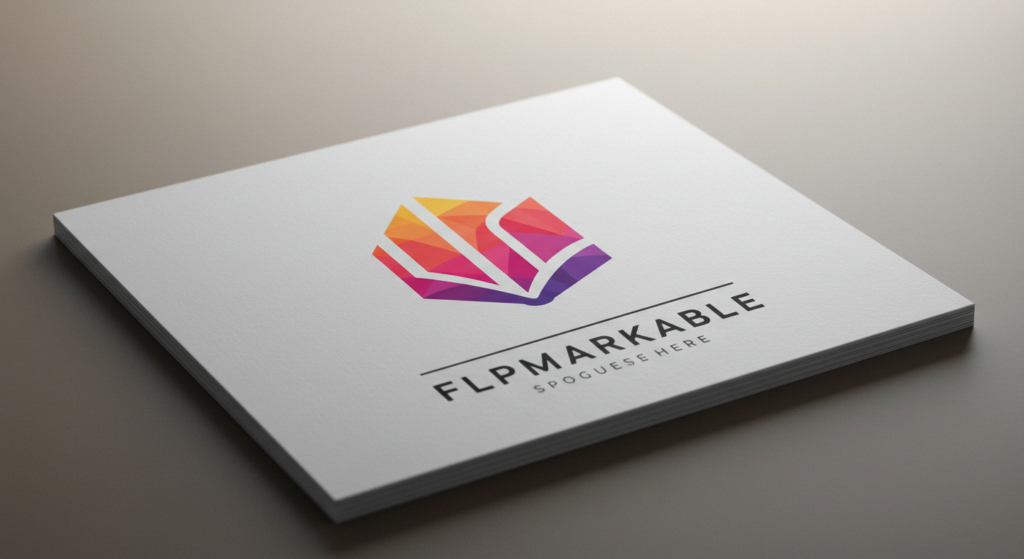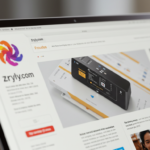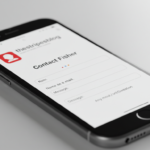Introduction
When we think about libraries, words like knowledge, learning, and community immediately come to mind. Yet, one of the most underestimated aspects of a library’s identity is its visual branding, particularly its logo. A thoughtfully designed emblem does more than decorate a letterhead; it becomes a symbol of trust, continuity, and engagement. This is where the concept of library logos flpmarkable emerges. The term combines the recognizable idea of library logos with the need for designs that are not just functional but truly remarkable—logos that leave an imprint in memory.
The importance of branding in the library world has grown exponentially over the past two decades. With digital platforms, online catalogs, and virtual resources, a library’s brand identity needs to extend beyond the building’s walls. Logos now live on websites, apps, social media profiles, and mobile notifications. In this ever-expanding environment, library logos flpmarkable serve as a compass, guiding users visually while symbolizing values such as accessibility, innovation, and inclusivity. The challenge lies in creating designs that resonate with diverse communities while staying timeless.
A logo is not just a picture—it is a story condensed into a single mark. The stack of books, the open pages, or the abstract shapes representing connectivity all reflect deeper values. What makes certain designs stand out as flpmarkable is their ability to blend simplicity with versatility. They adapt to new mediums without losing their message. As libraries continue to redefine themselves as cultural and technological hubs, their logos must evolve too. The conversation around library logos flpmarkable is therefore more than about aesthetics; it’s about identity, growth, and relevance in a modern world.
The Role of Library Logos in Modern Branding
Library logos flpmarkable play a critical role in connecting institutions with their communities. Unlike corporate brands, which often aim for profit-driven recognition, libraries focus on trust and service. A logo becomes a visual shorthand for reliability, inclusivity, and a love of learning. For instance, a rural community library may use imagery tied to local heritage, while a metropolitan library might embrace sleek, minimalistic designs to project modernity. Both strategies prove that logos are not ornamental—they are anchors of brand identity.
In today’s digital landscape, logos must also perform across platforms. From mobile apps to e-readers, icons need to remain clear and impactful even at reduced sizes. This is where the concept of flpmarkable comes in. A remarkable library logo adapts without losing meaning. Think of how a single graphic works on a book spine, a social media banner, and a mobile push notification. Consistency builds recognition, and recognition fosters loyalty. A well-crafted logo, therefore, is not simply a design choice; it is a strategic decision that strengthens a library’s place in the cultural fabric.
Key Elements of Flpmarkable Library Logos
Every flpmarkable library logo shares certain foundational elements that make it memorable. Simplicity is often at the core. Overly complex designs become cluttered and fail to adapt across mediums. Clean lines, balanced typography, and limited but impactful color palettes ensure longevity. For example, a modern logo featuring a stylized open book or an abstract letter “L” can communicate knowledge without overwhelming detail. These choices not only convey clarity but also ensure instant recognition.
Another crucial element is symbolism. A flpmarkable design tells a story beyond its visuals. It may incorporate symbols of connectivity, such as interlocking shapes representing collaboration, or imagery tied to growth, like a tree branching into leaves. Such visual metaphors resonate deeply because they align with the core mission of libraries: nurturing curiosity and fostering lifelong learning. When symbolism is thoughtfully embedded, a logo transcends aesthetics and becomes a cultural identifier for the community it serves.
Color Psychology in Library Branding
Colors are not just decorative—they evoke emotions and perceptions. In library logos flpmarkable, color psychology plays an essential role. Blue, for instance, conveys trust, calm, and intelligence, making it a frequent choice for academic libraries. Green often represents growth, sustainability, and renewal, aligning well with public libraries focused on community development. Bold reds and oranges, meanwhile, inject energy and vibrancy, signaling innovation or youth-oriented initiatives.
Choosing colors wisely ensures that logos communicate more than words could. A children’s library may adopt a playful palette with bright hues to capture imagination, while a research institution might prefer muted tones for professionalism. The key lies in understanding the target audience. When colors align with mission and demographics, they transform a logo from ordinary to flpmarkable. Beyond appeal, color consistency across print and digital media reinforces brand recognition and strengthens trust.
Typography and Its Impact on Perception
Typography shapes how a library’s logo is read and remembered. Serif fonts, with their traditional flair, often convey reliability and heritage, making them popular for long-standing institutions. Sans-serif fonts, in contrast, communicate modernity, simplicity, and accessibility. For logos flpmarkable, typography must strike a balance: readable at small sizes yet distinctive enough to stand out. The font choice subtly signals whether a library values tradition, innovation, or inclusivity.
Pairing typography with symbols enhances versatility. For example, a library logo may feature a bold sans-serif name alongside a minimalist book icon, ensuring clarity in both print and digital environments. Typography also influences how approachable a library feels. Rounded, softer fonts project warmth and friendliness, while sharper, geometric fonts suggest precision. In flpmarkable designs, typography is never an afterthought—it is a voice that speaks even before words are read.
Case Studies of Flpmarkable Library Logos
Consider the New York Public Library’s iconic lion logo. It transcends mere imagery by embodying strength, wisdom, and resilience. Its simplicity makes it adaptable across platforms while its symbolism resonates universally. Another example is the Seattle Public Library’s geometric logo, reflecting innovation and architecture. These cases show how flpmarkable logos balance symbolism with practicality, adapting to both local identity and global recognition.
Smaller community libraries also offer powerful examples. A rural library in Vermont designed its logo around a tree whose roots spell the word “read,” connecting literacy with nature and heritage. Meanwhile, a California children’s library opted for vibrant, playful shapes resembling building blocks, emphasizing learning through play. These diverse approaches demonstrate that flpmarkable logos are not confined to major institutions—they thrive wherever design meets storytelling.
Challenges in Designing Flpmarkable Library Logos
One of the greatest challenges lies in balancing tradition with modernization. Libraries with long histories may struggle to update logos without alienating loyal patrons. A redesign that is too drastic may feel disconnected from heritage, while one too conservative may appear outdated. Finding this balance requires deep community input and professional design insight. This tension makes the pursuit of flpmarkable logos both complex and rewarding.
Another challenge is scalability. Logos that look beautiful in print may fail in digital applications. Intricate details often blur on mobile screens or lose clarity in icons. Designers must anticipate these limitations from the start. Accessibility also plays a role. Logos should be inclusive, considering colorblind-friendly palettes and clear contrasts. These challenges demand foresight, creativity, and empathy—qualities that turn potential obstacles into opportunities for truly remarkable branding.
The Future of Library Logos Flpmarkable
As technology continues to reshape libraries, the future of logos will evolve alongside. Virtual reality platforms, mobile-first services, and AI-powered catalogs demand adaptable designs. The future may see animated logos or dynamic symbols that shift across contexts. Yet, the essence remains unchanged: logos must symbolize knowledge, trust, and inclusivity. Libraries that embrace modern design while honoring their mission will craft logos that remain flpmarkable for decades.
Sustainability will also influence design. Eco-friendly messaging and community-driven branding may inspire logos that highlight green initiatives, digital transformation, and social equity. In this future, flpmarkable logos will not just represent a library’s identity but also its values. By staying relevant, approachable, and visionary, library logos will continue to serve as beacons of learning in both physical and digital spaces.
Conclusion
Library logos flpmarkable are far more than artistic symbols—they are identity markers that shape how communities perceive their libraries. Through thoughtful use of simplicity, symbolism, color, and typography, these designs transform into timeless emblems. Case studies from both major institutions and small community libraries prove that flpmarkable logos are accessible to all when creativity aligns with purpose.
As libraries redefine themselves in the digital age, logos must evolve too. They need to adapt across platforms, respect tradition, and embrace inclusivity. The pursuit of flpmarkable logos is not merely a branding exercise; it is a commitment to building lasting connections with patrons. In the end, a library logo is not just an image—it is a story of trust, innovation, and the enduring power of knowledge.







